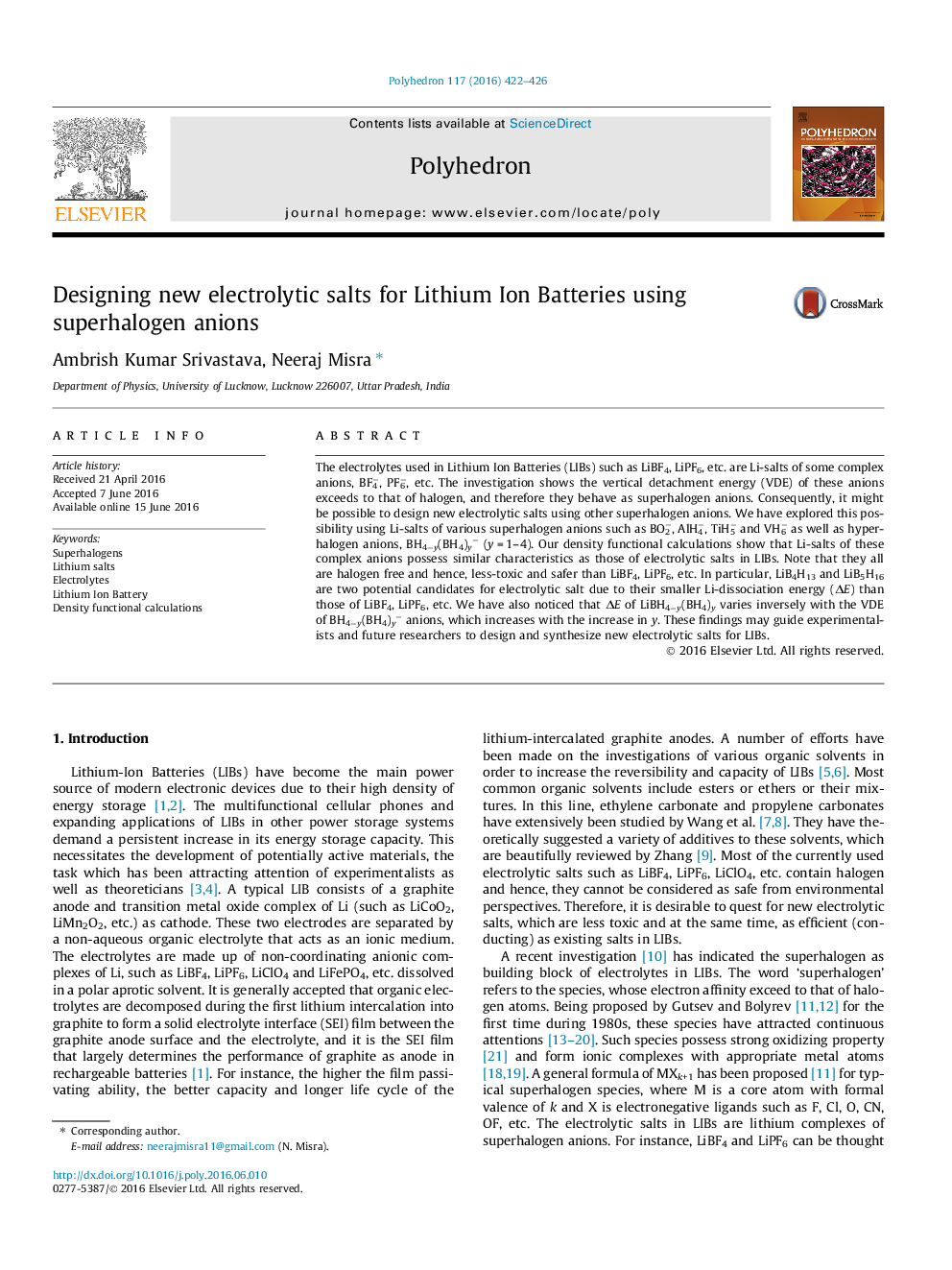| Article ID | Journal | Published Year | Pages | File Type |
|---|---|---|---|---|
| 1336224 | Polyhedron | 2016 | 5 Pages |
The electrolytes used in Lithium Ion Batteries (LIBs) such as LiBF4, LiPF6, etc. are Li-salts of some complex anions, BF4−, PF6−, etc. The investigation shows the vertical detachment energy (VDE) of these anions exceeds to that of halogen, and therefore they behave as superhalogen anions. Consequently, it might be possible to design new electrolytic salts using other superhalogen anions. We have explored this possibility using Li-salts of various superhalogen anions such as BO2−, AlH4−, TiH5− and VH6− as well as hyperhalogen anions, BH4−y(BH4)y− (y = 1–4). Our density functional calculations show that Li-salts of these complex anions possess similar characteristics as those of electrolytic salts in LIBs. Note that they all are halogen free and hence, less-toxic and safer than LiBF4, LiPF6, etc. In particular, LiB4H13 and LiB5H16 are two potential candidates for electrolytic salt due to their smaller Li-dissociation energy (ΔE) than those of LiBF4, LiPF6, etc. We have also noticed that ΔE of LiBH4−y(BH4)y varies inversely with the VDE of BH4−y(BH4)y− anions, which increases with the increase in y. These findings may guide experimentalists and future researchers to design and synthesize new electrolytic salts for LIBs.
Graphical abstractComplex anions in electrolytic salts of LIBs are ‘superhalogen’. Currently used electrolytic salts are toxic due to halogen content. Safer electrolytic salts have been designed using various superhalogen anions. LiB4H13 and LiB5H16 are two potential candidates for electrolytic salt.Figure optionsDownload full-size imageDownload as PowerPoint slide
